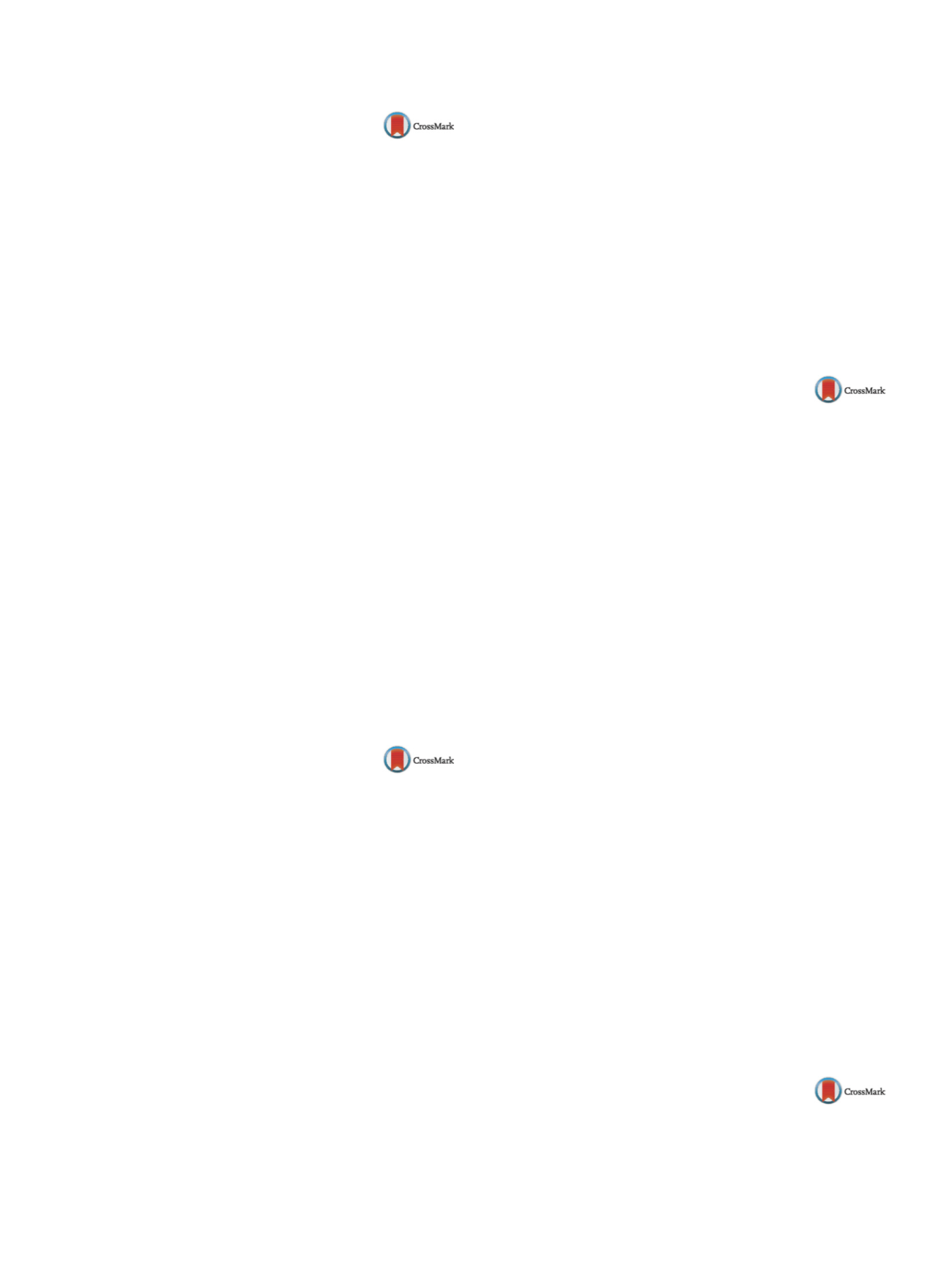

S512
25th European Congress of Psychiatry / European Psychiatry 41S (2017) S465–S520
EV0331
Does consanguinity increase the risk
of mental illnesses? A population
based study
A. Bener
Istanbul University, Biostatistics and Public Health, Istanbul, Turkey
The aim of this study was to assess the impact of consanguinity
on risk for mental disorders especially in primary health care-
PHC settings. It was decided to ascertain prevalence of common
mental disorders and consanguinity. We set out to study the bur-
den of commonest psychiatric disorders among consanguineous
marriages at PHC using the WHO Composite International Diag-
nostic Interview (WHO-CIDI) and examine their symptom patterns
and co-morbidity in Qatar. A prospective cross sectional study
was carried out over a year between November 2011 to October
2012. A total of 2.000 Qatari subjects aged 18 to 65 years were
approached; 1.475 (73.3%) gave consent and participated in this
study. Prevalence of psychiatric disorders using the WHO Compos-
ite International Diagnostic Interview (CIDI, version 3.0) showed
that six most common disorders were major depression disorders
(18.3%), any impulse control condition (18.3%), any anxiety disor-
ders (17.2%), any mood disorders (16.9%), followed by separation
anxiety disorders (15.2%), personality disorder (14.1%). The mean
age
±
SD of the 1.475 subjects interviewed was 39.3
±
9.8 years.
The rate of consanguinity in the present generation was 31.5%
[95% CI = 29.1–33.7]. There were statistically significant differences
between consanguineous and non-consanguineous with regards
to age, educational status, occupation status, household income as
well as BMI, cigarette smoking and sheesha smoking. One-fifth of
all adults who attended the PHC center 20% had at least one psychi-
atric diagnosis. The prevalence of the generalized anxiety disorders;
social phobia, specific phobia, major depression, and personality
disorders were significantly higher in consanguineous marriages
than in non-consanguineous.
Disclosure of interest
The author has not supplied his declaration
of competing interest.
http://dx.doi.org/10.1016/j.eurpsy.2017.01.661EV0332
Risk factors in emotional and
personal development of senior
preschool children from different
social strata (middle-high and
middle-low social layers)
N. Burlakova
∗
, P. Davidovich
Lomonosov Moscow State University, Faculty of Psychology-
Department of Neuro- and Pathopsychology, Moscow, Russia
∗
Corresponding author.
Introduction
Methodological basis of Vygotsky’s scientific school
implemented in the study provides possibility to detect risk vari-
ants in emotional and personal development of children from
different social strata and to explore the mechanisms responsible
for pathological development.
Objectives and methods
The study included two groups:(1) chil-
dren from a middle-high social stratum (
n
= 31); (2) children from
a middle-low social stratum (
n
= 36). All the children were between
ages 5.5–7 years at the moment of research, lived in Moscow
and attended extracurricular activities. Following methods were
used: objective description of child’s development in socio-cultural
context; semi-structured interview; long-term overt and covert
observations; diagnostics of intellectual, emotional and personal
school readiness.
Results
Children from the 1st group demonstrate higher level
of intelligence; they are more successful in solving unusual tasks.
Children from the 2nd group tend to follow instructions given by
teacher. Children from the 1st group unlike those from the 2nd
one are characterized by lower level of social competence; they
encounter difficulties in establishing contacts and don’t perceive
hierarchy in adult–child relationship. Mass protection typical for
children from the 1st group and hyper-satisfaction of their needs
determine decrease of frustration and don’t deepen their personal
experience providing basis for pathological development. Children
from the 2nd group are more inclined to demonstrate alarm reac-
tions, but in general they possess higher level of emotional and
personal maturity and social flexibility.
Conclusion
Socio-cultural environment has a direct say in poten-
tial risk zones of child development.
Disclosure of interest
The authors have not supplied their decla-
ration of competing interest.
http://dx.doi.org/10.1016/j.eurpsy.2017.01.662EV0333
Parental expectations in families from
different social and cultural groups
and their influence on emotional and
personal development of a child
N. Burlakova
∗
, P. Davidovich
Lomonosov Moscow State University, Faculty of Psychology-
Department of Neuro- and Pathopsychology, Moscow, Russia
∗
Corresponding author.
Introduction
The study explores subjective image attributed by
parents to their child that was formed under the influence of dif-
ferent socio-cultural conditions and affects communication with a
child. Methodological basis of Vygotsky’s scientific school was used
in the research.
Objectives and methods
The study included two groups of fam-
ilies from different social strata: group 1—middle-high stratum,
group 2—middle-low stratum (
n
1
= 31,
n
2
= 36), all the families live
in Moscow; the children (5.5–7 years old) attend extracurricular
activities. Following methods were used: analysis of social context
of child’s development; long-term overt and covert observations;
analysis of complaints, ambitions and expectations — “a project of
future development” of a child imagined by parents followed by
reconstruction of their relations that appear to be the basis for the
“project”; method of semi-structured interview.
Results
First group demonstrates high level of irrelevance in
subjective extra-positive image of a child. That poses risk for
child’s emotional and personal development. Families from differ-
ent strata tend to demonstrate irrelevance between ambitions and
real success of a child. First group tend to overstate, 2nd group —
to understate. In some cases parents’ mindsets cause emotional
peculiarities of the child: individuality and as a result inflated
ego, demonstrative behavior accompanied by interest to external
attributes. In 2nd group children are mostly anxious and encounter
difficulties in demonstration their abilities, but they possess higher
level of emotional and personal maturity and social flexibility.
Conclusion
Socio-cultural features of the stratum influence
parental expectations that form potential risk zones in child devel-
opment.
Disclosure of interest
The authors have not supplied their decla-
ration of competing interest.
http://dx.doi.org/10.1016/j.eurpsy.2017.01.663EV0334
Death in the work of Jorge Amado: The
function of art in education for death
S. Färber
1 ,∗
, M. Färber
21
VIVER Psicologia e Tanatologia, Tanatologia, Cascavel, Brazil
2
VIVER Psicologia e Tanatologia, Psicologia, Cascavel, Brazil
∗
Corresponding author.


















